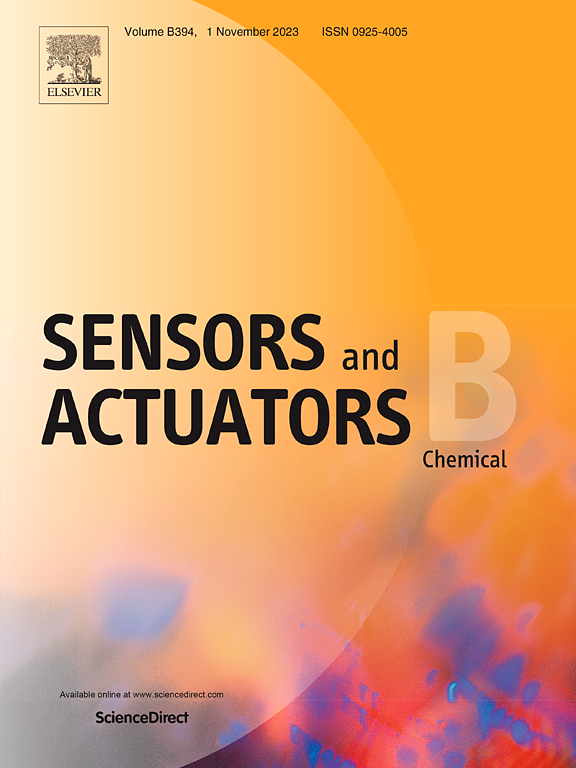Magnetic field-enhanced conductometric acetone gas sensing of multiferroic Bi0.92Dy0.08FeO3
IF 8
1区 化学
Q1 CHEMISTRY, ANALYTICAL
引用次数: 0
Abstract
While non-contact magnetic fields have been widely employed as stimuli for modulating magnetic, electric, and catalytic properties, their direct influence on gas sensing processes remains unexplored. The renaissance of multiferroics, whose surface electric polarization can be magnetically controlled via intrinsic magnetoelectric coupling effect, offers the possibility to manipulate gas sensing properties through magnetic field. Here, we investigated the effect of the external magnetic field on gas sensing performance using the most representative multiferroic material. Our experimental results demonstrate that the Bi0.92Dy0.08FeO3 sensors exhibit a non-linear magnetic field-controlled acetone sensing performance. When the Bi0.92Dy0.08FeO3 sensor is exposed to a 140 mT magnetic field, its gas response towards 100 ppm acetone rises from 12.7 to 20.3, reaching a 60 % increase. The response time decreases from 53 to 41 s, corresponding to a 113 % increase in reaction rate constant. These improvements are attributed to the magnetoelectric coupling effect, which induces surface uncompensated polarization and enhances domain conductivity, thereby promoting surface oxygen chemisorption and charge carrier transport. Our findings not only advance the fundamental understanding of magnetically tunable gas sensors but also broaden the potential applications of multiferroic materials.

多铁Bi0.92Dy0.08FeO3的磁场增强电导丙酮气敏
虽然非接触磁场已被广泛用作调节磁、电和催化性能的刺激,但它们对气体传感过程的直接影响仍未被探索。多铁质材料的复兴,其表面的电极化可以通过固有的磁电耦合效应进行磁控制,提供了通过磁场操纵气敏特性的可能性。本文采用最具代表性的多铁性材料,研究了外加磁场对气敏性能的影响。实验结果表明,Bi0.92Dy0.08FeO3传感器具有非线性磁场控制的丙酮传感性能。当Bi0.92Dy0.08FeO3传感器暴露在140 mT的磁场中时,其气体响应从12.7上升到20.3,提高了60%。反应时间由25 s缩短至19 s,反应速率常数提高113%。这些改进归因于磁电耦合效应,磁电耦合效应诱导表面无补偿极化,增强畴电导率,从而促进表面氧化学吸附和载流子输运。我们的发现不仅促进了对磁可调谐气体传感器的基本认识,而且拓宽了多铁性材料的潜在应用。
本文章由计算机程序翻译,如有差异,请以英文原文为准。
求助全文
约1分钟内获得全文
求助全文
来源期刊

Sensors and Actuators B: Chemical
工程技术-电化学
CiteScore
14.60
自引率
11.90%
发文量
1776
审稿时长
3.2 months
期刊介绍:
Sensors & Actuators, B: Chemical is an international journal focused on the research and development of chemical transducers. It covers chemical sensors and biosensors, chemical actuators, and analytical microsystems. The journal is interdisciplinary, aiming to publish original works showcasing substantial advancements beyond the current state of the art in these fields, with practical applicability to solving meaningful analytical problems. Review articles are accepted by invitation from an Editor of the journal.
 求助内容:
求助内容: 应助结果提醒方式:
应助结果提醒方式:


